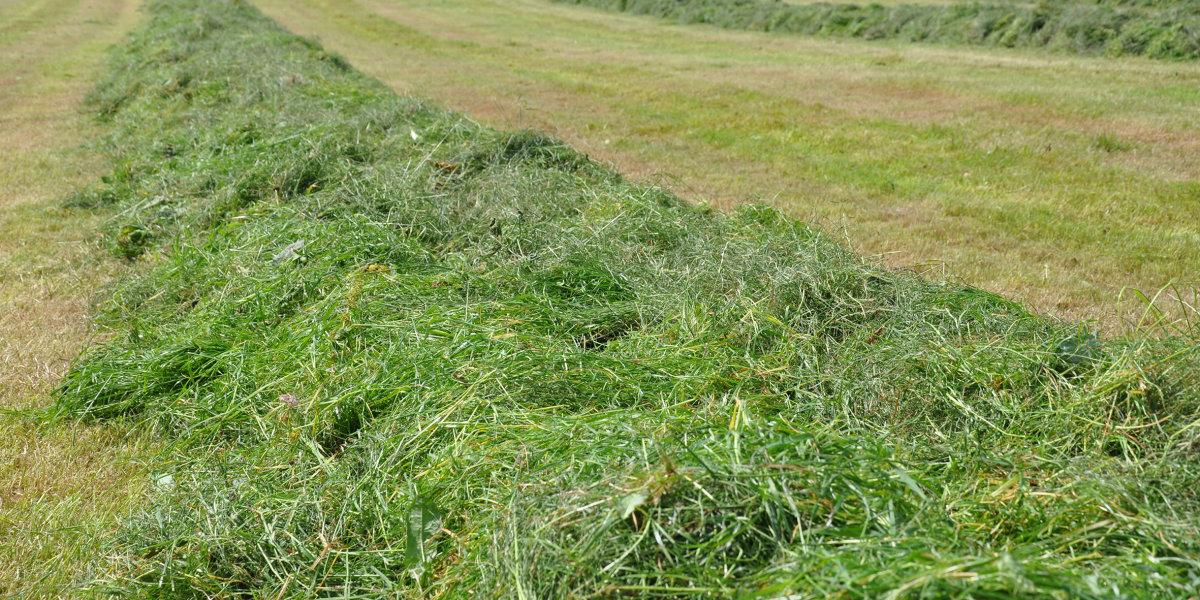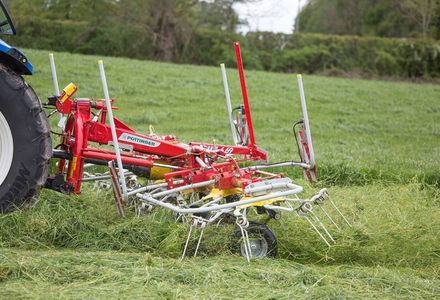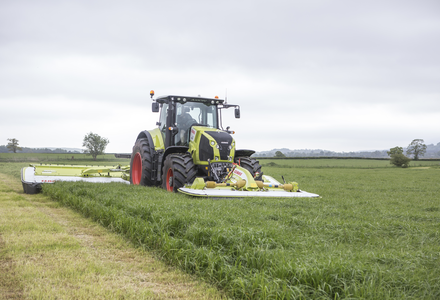Take steps to head off silage shortfalls
27 June 2018
Livestock farmers concerned about shortfalls of silage for winter feeding, after a mixed bag of grass yields so far this season, should keep regular tabs on stocks and be prepared to put extra effort into making and conserving remaining cuts, a silage specialist is urging.

According to Ecosyl silage specialist, Colin Callender, the cold start to the season followed
by dry spells have left some farmers questioning whether they will have enough silage.
“Certainly, it’s been a mixed bag for grass yields,” says Mr Callender. “Where people took
first cuts earlier aiming for quality, yields were down. And certainly some second cut yields
have been down because of dry weather.
If you are concerned about silage stocks, the key is not to panic. What you don’t want to do is aim for bulk at the expense of quality. Instead, aim for a good balance between the two and do everything possible to safeguard against losses in the clamp. Also, consider alternative silage crop options,” he adds.
To assist, Mr Callender suggests a three-point plan:
1. Don’t compromise what you cut
Don’t be tempted to cut grass too low for extra bulk, he says, because the stem base is
low in digestibility and cutting too low can introduce undesirable microbes into the clamp,
causing losses.
Equally, don’t delay cutting dates of summer grass silage excessively to
allow it longer to bulk up. Although yield may increase, digestibility will almost certainly fall, and it will leave less time for growth of any later cuts.
Additionally, Mr Callender urges rapid wilting. “Sugars start declining once grass is cut,” he says, “because they are being used by the plant, since it’s still living. So, aim to wilt to 28-32% DM in the shortest possible time. If you cut in the morning and achieve rapid wilting,you could achieve 28-32% DM that same afternoon.”
2. Do pay attention to harvest and storage
Do plan ahead to keep air out of the clamp, says Mr Callender. “Use the correct chop
length for the %DM of the grass to help get the best consolidation, then seal and weight
the clamp fully. By doing these you’ll not only aid fermentation to conserve quantity and
quality, but also minimise wastage due to heating.
Similarly, even if you don’t normally use one, remember the benefits of a proven additive. Across 15 grass silage trials, dry matter recovery was boosted from 91.8% to 95.5% of the original material ensiled using an additive containing the bacterium, Lactiplantibacillus plantarum MTD/1. That’s equivalent to an extra 37 tonnes back per 1,000 tonnes clamped.
3. Do consider alternative forages or an extra cut of grass
If you are looking short on silage, do consider other options, says Mr Callender, such as wholecrop or taking an additional, late cut of grass.
It’s possible to get 12-15 tonnes of DM per hectare from wholecrop wheat. If you aren’t growing cereals, maybe look into buying a standing crop. Wholecrop makes an excellent component in the ration with grass silage,” he adds. “As with all forages, effective preservation is essential. Many farmers opt to make fermented wholecrop, which is highly palatable and can have a starch content as high as 35%.
“Ideally it should be harvested at 45-50% dry matter, which offers a good balance between providing moisture and sugars for fermentation and achieving a good starch content. Typically, 45-50% DM corresponds to grain at the ‘soft Cheddar cheese’ stage but with no detectable ‘milk’.
“For late-cut grass, while wilting can be more challenging towards the end of the season, and sugar levels can be lower, if you ted it properly and use a quality additive to boost fermentation, you can end up with a worthwhile product.”

